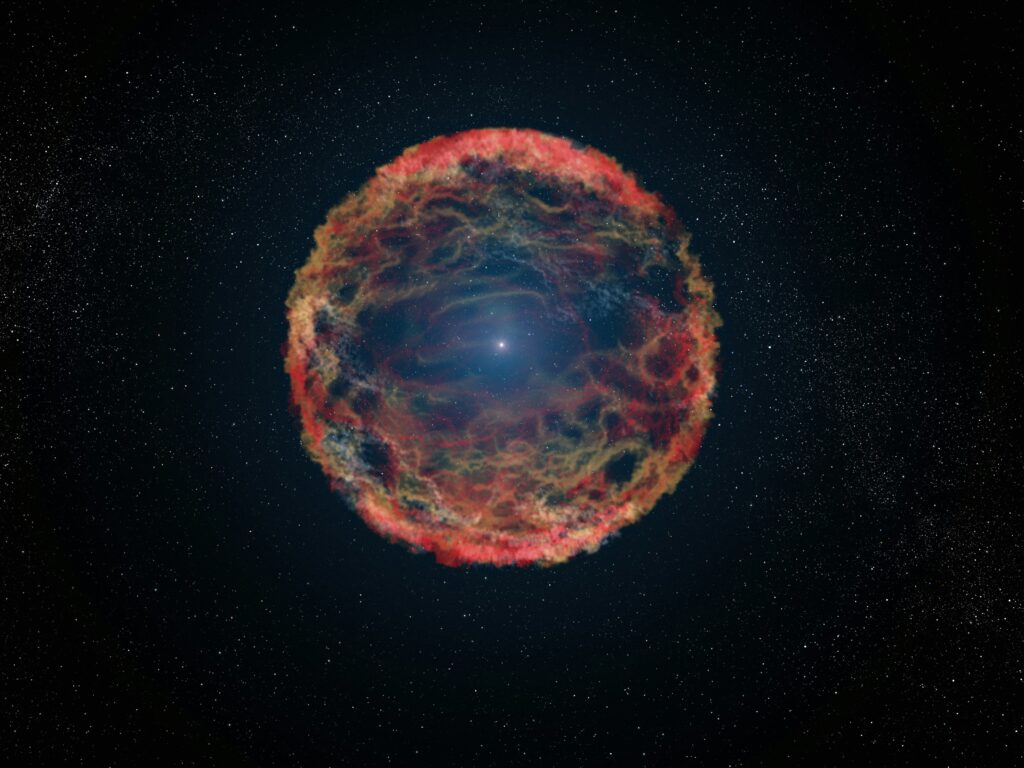
A groundbreaking astronomical event unfolded as a team from the University of Hawaiʻi Mānoa successfully mapped the three-dimensional shape of a supernova during its explosive phase. The supernova, designated as SN 2024ggi, was observed in the nearby galaxy NGC 3621 and revealed an unexpected, elongated shape reminiscent of an olive, rather than the anticipated spherical form. This unprecedented observation, detailed in a study published in Science Advances, occurred shortly after the detection of the explosion in April 2024.
The rapid response to this cosmic phenomenon was spearheaded by Chris Ashall, an assistant astronomer at the University of Hawaiʻi Mānoa’s Institute for Astronomy. Upon receiving the alert about the supernova, Ashall noted, “We knew this was the kind of relatively nearby explosion you might see once in a decade.” The swift collaboration among observatories was crucial, allowing the team to capture critical data at a pivotal moment in the supernova’s lifecycle.
Swift Observations at the Very Large Telescope
Within hours of the supernova’s discovery, the team submitted an urgent request to the European Southern Observatory (ESO) for observations using the Very Large Telescope (VLT) in Chile. The telescope was able to pivot toward SN 2024ggi approximately 26 hours after the initial detection. Utilizing the FORS2 instrument, the team successfully captured polarized light during the shock breakout phase, a brief window that would have closed within a day.
By measuring the changes in polarization across different wavelengths, the scientists were able to reconstruct the three-dimensional structure of the supernova’s ejecta, revealing its unique “olive” shape. The findings suggest an axisymmetric, prolate breakout that flattened as it interacted with surrounding gas. This orientation raises intriguing questions about the mechanisms that govern the explosions of massive stars.
Insights into the Progenitor Star and Ongoing Research
Further analysis identified the progenitor star as a red supergiant with a mass approximately 12–15 times that of the Sun and a radius of around 500 solar radii. These characteristics align with a typical Type II supernova explosion and provide insights into the nature of the short, intense shock breakout signal observed. The geometry measured during the breakout phase offers new constraints for astrophysicists aiming to refine their models of stellar explosions.
Researchers are now utilizing the James Webb Space Telescope (JWST) to track the expanding debris from SN 2024ggi. Initial spectra from JWST reveal clumpy material where molecular formation is occurring. The ongoing collaboration between the University of Hawaiʻi and various astronomical institutions aims to combine infrared and optical data to map the distribution of dust and molecules in the cooling ejecta. This effort promises to deliver one of the most detailed three-dimensional views of a massive star’s final moments.
The discovery of the “olive” silhouette not only highlights a rare cosmic event but also underscores the importance of rapid alerts and flexible observational scheduling in capturing fleeting astronomical phenomena. The collaboration between local scientists and global partners exemplifies the collective effort required to enhance our understanding of stellar death and the complexities of the universe.







